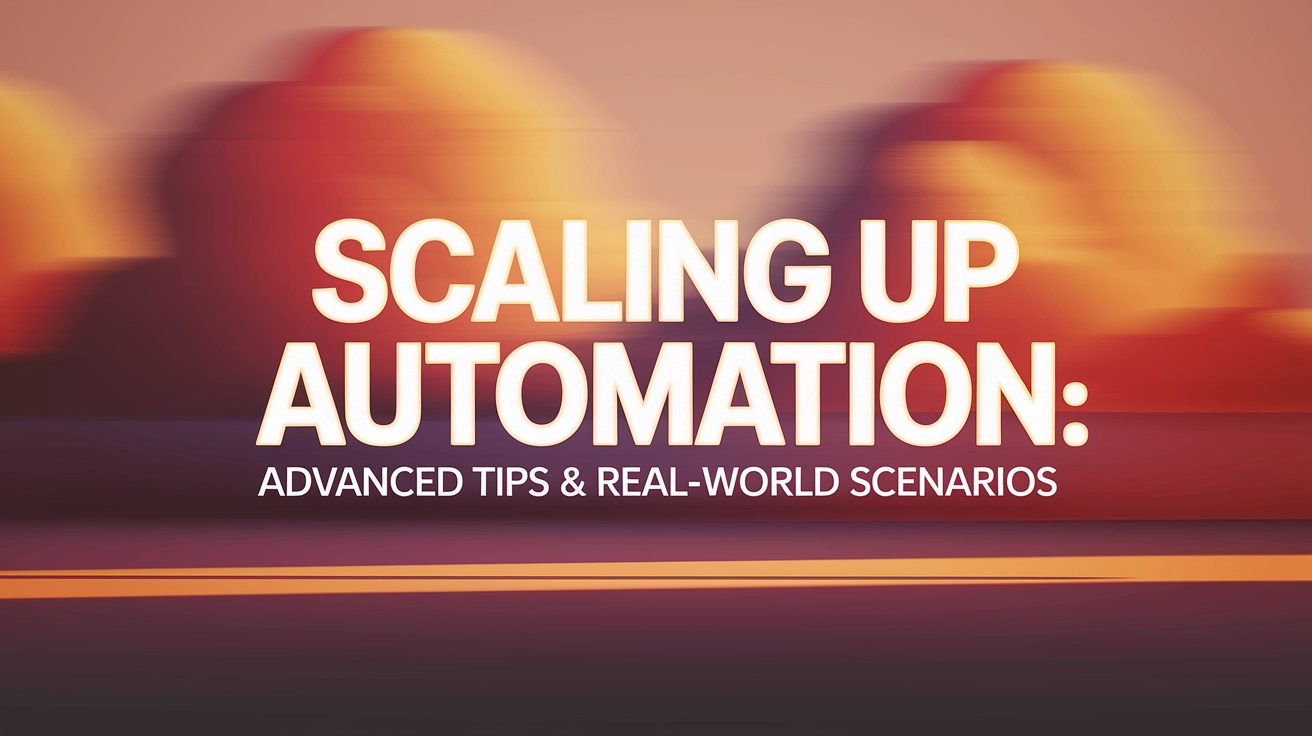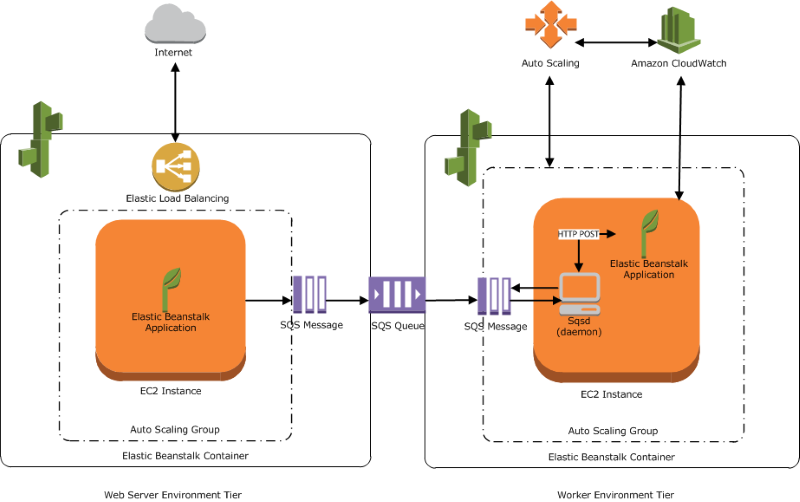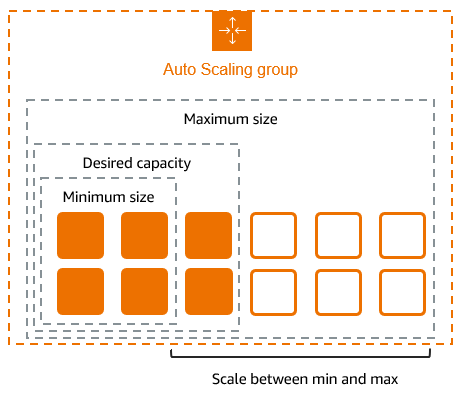Hey there, automation enthusiasts! Welcome to the fourth installment of our DevOps series. We've covered the basics of scripting, configuration management, and CI/CD pipelines. Now it's time to level up and talk about how to scale your automation efforts for maximum impact. Because let's be real—building a cool automation script is one thing, but implementing automation at scale across an entire organization? That's where things get interesting (and where the big career opportunities live).
Moving Beyond One-Off Automation
So you've automated a few tasks, set up some CI/CD pipelines, and maybe even deployed some infrastructure as code. Awesome start! But here's the truth: many organizations get stuck in what I call "automation island syndrome"—where pockets of automation exist, but they're disconnected from each other and don't deliver their full potential.
True automation at scale means thinking bigger. It means creating systems where:
- Automation tools work together seamlessly
- Processes can handle increasing loads without breaking
- Teams across the organization benefit (not just the DevOps nerds)
- Business outcomes improve significantly
Let's dive into how to make that happen.
Advanced Tip #1: Identify High-Impact Processes First
When scaling automation, you want the biggest bang for your buck. Start by mapping out all your processes and rating them based on:
- Frequency: How often is this process performed?
- Complexity: How many steps and people are involved?
- Error rate: How often do mistakes happen?
- Business impact: What's the cost of errors or delays?
Finance departments are often goldmines for automation. One fintech company I worked with automated their invoice processing workflow and reduced processing time from 8 days to just 4 hours—while improving accuracy by 98%.
Priority = Frequency × Complexity × Error Rate × Business Impact
Use this formula to create your automation priority list, then tackle the highest-scoring processes first.

Advanced Tip #2: Embrace the "Start Small, Scale Fast" Approach
Trying to automate everything at once is a recipe for disaster. Instead, follow this battle-tested approach:
- Pick one department or team to fully automate first
- Document everything about their current processes
- Create a pilot automation project with clear success metrics
- Demonstrate wins with hard data
- Use the success to get buy-in for expanding to other departments
For example, a retail client of mine started by fully automating their inventory management system in just two warehouses. After proving a 32% efficiency improvement, they got the budget to roll out automation across all 14 warehouses within six months.
Advanced Tip #3: Build Self-Healing Automation
Basic automation breaks when unexpected things happen. Advanced automation fixes itself.
Here's how to make your automation frameworks more resilient:
- Implement robust error handling in all scripts and workflows
- Add automatic retry mechanisms with exponential backoff
- Create circuit breakers to prevent cascading failures
- Design fallback processes for critical systems
- Implement comprehensive monitoring to catch issues early
# Example of a self-healing function in Python
def resilient_operation(func, max_retries=5, backoff_factor=2):
retries = 0
while retries < max_retries:
try:
return func()
except Exception as e:
retries += 1
if retries >= max_retries:
logger.error(f"Operation failed after {max_retries} attempts: {e}")
# Trigger fallback mechanism
return fallback_procedure()
# Exponential backoff
sleep_time = backoff_factor ** retries
logger.warning(f"Attempt {retries} failed, retrying in {sleep_time}s")
time.sleep(sleep_time)
This pattern alone can increase your automation reliability by 40-60% in most environments.
Advanced Tip #4: Automate Cross-Departmental Workflows
The real power of automation emerges when you bridge silos between departments. This is where many organizations struggle but where the biggest ROI lives.
Consider this real-world scenario: A healthcare provider automated their patient onboarding process across four departments:
- Reception (patient information collection)
- Insurance verification
- Medical records
- Care team assignment
Before automation, this process took 3-4 days and had a 23% error rate. After implementing cross-departmental automation:
- Process time: Down to 4 hours
- Error rate: Reduced to 2%
- Patient satisfaction: Increased by 47%

The key was designing automation that maintained "handshakes" between departments while eliminating manual data entry and status update meetings.
Advanced Tip #5: Leverage Cloud-Native Automation at Scale
Cloud platforms offer powerful tools for automation at scale. Here's how to leverage them effectively:
Serverless for Event-Driven Automation
Using serverless functions (AWS Lambda, Azure Functions, Google Cloud Functions) allows you to create event-driven automation that scales automatically with zero management overhead.
For example, an e-commerce platform implemented serverless automation for their order processing workflow:
- New orders trigger inventory check functions
- Inventory updates trigger shipping label creation
- Shipping events trigger customer notification functions
The entire process runs with zero human intervention, scales infinitely during peak seasons, and costs 72% less than their previous solution.
Infrastructure as Code for Consistent Environments
Tools like Terraform, AWS CloudFormation, and Pulumi enable you to define your entire infrastructure as code—making it reproducible, versionable, and scalable.
# Terraform example of scalable infrastructure
resource "aws_autoscaling_group" "app_asg" {
name = "app-asg"
min_size = 2
max_size = 10
desired_capacity = 2
vpc_zone_identifier = [aws_subnet.private_a.id, aws_subnet.private_b.id]
# Automatic scaling based on CPU utilization
scaling_policy {
name = "cpu-scaling"
adjustment_type = "ChangeInCapacity"
scaling_adjustment = 1
cooldown = 300
metric_aggregation_type = "Average"
}
}
Real-World Automation Success Story: Global Retail Chain
Let me share a real-world example that brings all these principles together. A global retail chain with 500+ stores was struggling with inventory management, especially during holiday seasons.
Their challenges:
- Manual inventory counts taking 40+ hours per store per month
- 18% discrepancy between reported and actual inventory
- $14M in annual losses from out-of-stock situations
- Frustrated store managers spending weekends on inventory
Their scaled automation solution:
- Centralized inventory system with real-time updates from POS systems
- RFID technology for automated physical inventory counts
- ML algorithms to predict stock requirements by store
- Automated ordering system with human approval only for exceptions
- Mobile app for store managers with inventory visibility
The results after 12 months:
- Inventory count time: Reduced by 94%
- Inventory accuracy: Improved to 99.2%
- Out-of-stock losses: Reduced by $11.2M
- Store manager satisfaction: Increased by 67%

Scaling Culture Along with Technology
One often-overlooked aspect of scaling automation is the cultural shift required. Technology alone isn't enough—your organization needs to embrace an automation mindset.
Here's how to scale your automation culture:
- Create automation champions in each department
- Celebrate automation wins publicly
- Build an automation center of excellence
- Train teams on automation concepts (not just tools)
- Reward innovation and process improvement ideas
Conclusion: Your Scaling Automation Roadmap
As we've seen, scaling automation isn't just about more scripts or bigger infrastructure—it's about strategic implementation that transforms how your organization operates.
Your 90-day roadmap for scaling automation:
- Weeks 1-2: Audit current processes and identify high-impact automation candidates
- Weeks 3-4: Select one department for pilot automation and document everything
- Weeks 5-8: Implement your first cross-departmental automation workflow
- Weeks 9-10: Measure results and gather feedback
- Weeks 11-12: Present wins and expand to the next department
Remember that scaling automation is a journey, not a destination. The most successful organizations treat automation as an ongoing initiative that constantly evolves as technology and business needs change.
Ready to take your automation skills to the next level? Check out our advanced DevOps courses at DevOps Horizon where we dive deeper into these concepts with hands-on labs and real-world scenarios.
Until next time, keep automating smartly!
This post is part of our DevOps Mastery series. Don't miss our previous posts on CI/CD fundamentals and configuration management.





1 Comment
[…] pipeline to include security scanning using free tools like OWASP Dependency Check. Learning to integrate security into your automation makes you stand out from other […]